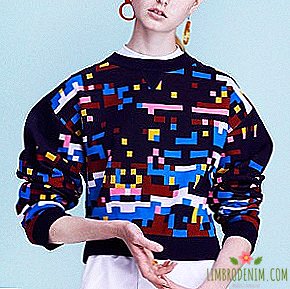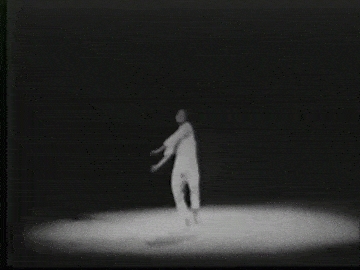Why fashion houses are betting on little-known designers
In late July, it became known that after three years of cooperation, Alexander Wang will leave the post of creative director of Balenciaga and focus on his own name brand. Less than a month left before the designer will show his latest collection for Balenciaga - this will happen on October 2 at Paris Fashion Week. All this time, no one talks about who will come to the place of Wang. In addition to candidates who have already made a name for themselves, such as Christopher Kane, Lazaro Hernandez and Jack McCullough from Proenza Schouler, there is a version that some unknown designer from the brand team will be appointed. In general, the Balenciaga leadership itself hinted at such a probability.
Some believe that they were inspired by the example of Gucci and their new superstar Alessandro Michele, allegedly with the arrival of which the brand’s profit increased by 4.9% in the first six months, for the first time in the last two years (although, by and large, Michele’s merits are ambiguous here, his collections still only go on sale). However, the very fact that Balenciaga - a house with a history and a tremendous legacy in the context of clothing (which Gucci does not have) - thought about not inviting a star to the creative director’s chair, gives reason to ask: do they need it now? the world of fashion star names?

When in 1957, Christian Dior announced that after his death, 21-year-old Yves Saint-Laurent — at that time just one of the full-time designers — would be head of his brainchild — they knew only by winning the Woolmark Prize. However, after his debut collection, shown already in 1958, everyone started talking about Saint-Laurent and began to call it new hope “couture”. Appointed in 1990 by Gucci female line designer, an unknown American Tom Ford in just two years became the creative director of the brand and brought him to the rank of one of the most desired for the next 12 years. Before becoming the creative director of the Yves Saint Laurent men's line, Eddie Slimane served as an assistant to fashion consultant Jean-Jacques Picard.
For four years, Phoebe Faylo assisted Stella McCartney at Chloé to take her place after the last departure, and almost from the first collection to fall into the category of the most promising designers. Nicola Ghesquière, who headed Balenciaga in 1997, was previously engaged in the collection of the brand for the Asian market and was not a media character. The young Italian Ricardo Tishi was appointed Creative Director of Givenchy just six months after the show of his debut collection at Milan Fashion Week. These are not the only examples, but they ultimately resulted in, if not in the longest (as in the case of Yves Saint Laurent or Edie Slimane), then definitely one of the brightest unions. And at the same time they made the name of each of the designers, turning them into self-sufficient units in the fashionable table of ranks.
Today we are witnessing another round of the play "Tell me your name." Prior to joining Schiaparelli, Bertrand Guyon played the couture at Valentino on the sidelines. Adrian Kayyado (now in Carven with Alexis Martial) - accessories and shoes in Givenchy along with Hush. Julien Dossen was assisted by Nicolas Gheskiera in Balenciaga for several years and then transferred to Paco Rabbane, where he is now appointed creative director. Nadezh Vane-Tsybulski was the art director of the New York brand of sisters Olsen THE ROW, and therefore looks like an ideal candidate for Hermès. Johnny Koka had a hand in not one bag in Céline, so his appointment to Mulberry is more than justified, given that the bags are the main revenue item of the brand.
Julie de Libran (now in Sonia Rykiel) had no experience managing a big fashion house, but for six years she had been the right hand of Marc Jacobs while he was working at Louis Vuitton, and could watch the process from the first row. Arnaud Vaillant and Sebastian Meyer founded their brand Coperni Femme just two years ago, but they are already considered among the most promising young French designers, and their aesthetics are great for renewing the futuristic heritage of Courrèges. Rodolfo Pallalunga in 2006 became design director at Prada, and three years later he moved to Vionnet, from where he was taken to Jil Sander. Until recently, all these people were, as they say, widely known in narrow circles, but the big people of the fashion business decided to give them a chance to prove themselves. And that's why.

At the time of the display of the 1960 collection for Christian Dior, Yves Saint Laurent was already pretty bored with “just beautiful dresses” and decided to show the world what he really cared about - the story of the generation of young beatniks and inhabitants of the left bank of Paris, in which he saw fashion inspiration of the future. When asked what exactly prompted him to release grunge princesses on the catwalk in the 1992-made Perry Ellis 1992 collection, Marc Jacobs answered: "I just thought - fuck it! I want to do what seems really important to me." How we ended both stories, we know very well - noisy layoffs, the cause of which was no secret to anyone. What is called, do not agree characters. For Marcel Boussac, who owned Dior in those years, and Perry Ellis investors, the clients' interests turned out to be above the notorious maxim "fashion must be progressive and innovative."
Such cases have taught investors to ask the right course for designers as far as the coast, and John Galliano, whom Bernard Arnaud once gave a complete blank for reforming the Dior house, is rather an exception. But more often, the dichotomy between what is close to the designer, and how the brand is wanted by its owners, is a stone on the way to a bright future together. In 2001, Alexander McQueen left Givenchy with the recognition that it was hard for him to work when his creative energy was not allowed to gush to the full. And it can be understood: when you are a talented designer with great potential and quite specific artistic vision, an attempt to marry it all with the aesthetics and heritage of an already existing home can turn out to be stressful for both parties. However, sometimes you may not be asked to specify guidelines, and then you have the right to create what you see fit, as Edie Slimane clearly demonstrated to us several seasons ago. But again, as an exceptional case.
Therefore, "unbroken horses" become for some brands far more convenient option to work. Such guys are usually talented, but not so ambitious to carry their name ahead of the fashion house they work for. Their creative energy is easier to direct to the right direction of the company, so that it’s not boring, but commercially successful. The public usually refers to such newcomers (even if they have many years of experience in the industry) indulgently, not expecting from them either a grandiose breakthrough, or any specific designer attacks. So, if a breakthrough does happen (and Alessandro Michele proved to us that everything is possible), then it will be grand. And if not - well, no one made big bets. In addition, as practice shows, the star name today is far from always the key to success. An example of this is a reserved reaction to the ambiguous steps of John Galliano at Maison Margiela. Even those who did not cease to glorify the designer during the four years of his absence and were waiting for his return, as the second coming of Christ, admit: garbage bags are not what fashion should look like in 2015.

↑ Autumn-winter collection Gucci 2015-2016
So what makes a brand desirable today, if not a big name behind all these collections? The answer is matching tseigaystu. And if any second assistant of the first designer possesses instinct for all this, there is nothing reprehensible in giving him a chance. The reappraisal of values in the early 2010s, the result of which was, in particular, the postulate “expensive does not necessarily mean good,” taught us something else — to evaluate things not by their name, but by how they look (this, incidentally, refers not only to fashion). Bravat with little-known, but talented names is an absolute manifestation of progressiveness, which by today's standards is almost the main indicator of modern man.
Freedom from prejudice is no less important. All this finds a logical continuation in other manifestations: the concept of quiet luxury, passion for new faces instead of popular pop stars in brand advertising campaigns, a whole echelon of young designer brands whose creators go into the shadows, leaving things to speak for themselves. Today, even famous designers who earn big money on collections for large fashion houses do not play rock stars (okay, except for some) and behave much more modest than their counterparts from the 80s. And, to be honest, we are all just a little tired of the circulation of the same names and want fresh blood. Well, fresh ideas, of course.
PHOTO: Courtesy of Balenciaga, The Row, Gucci





